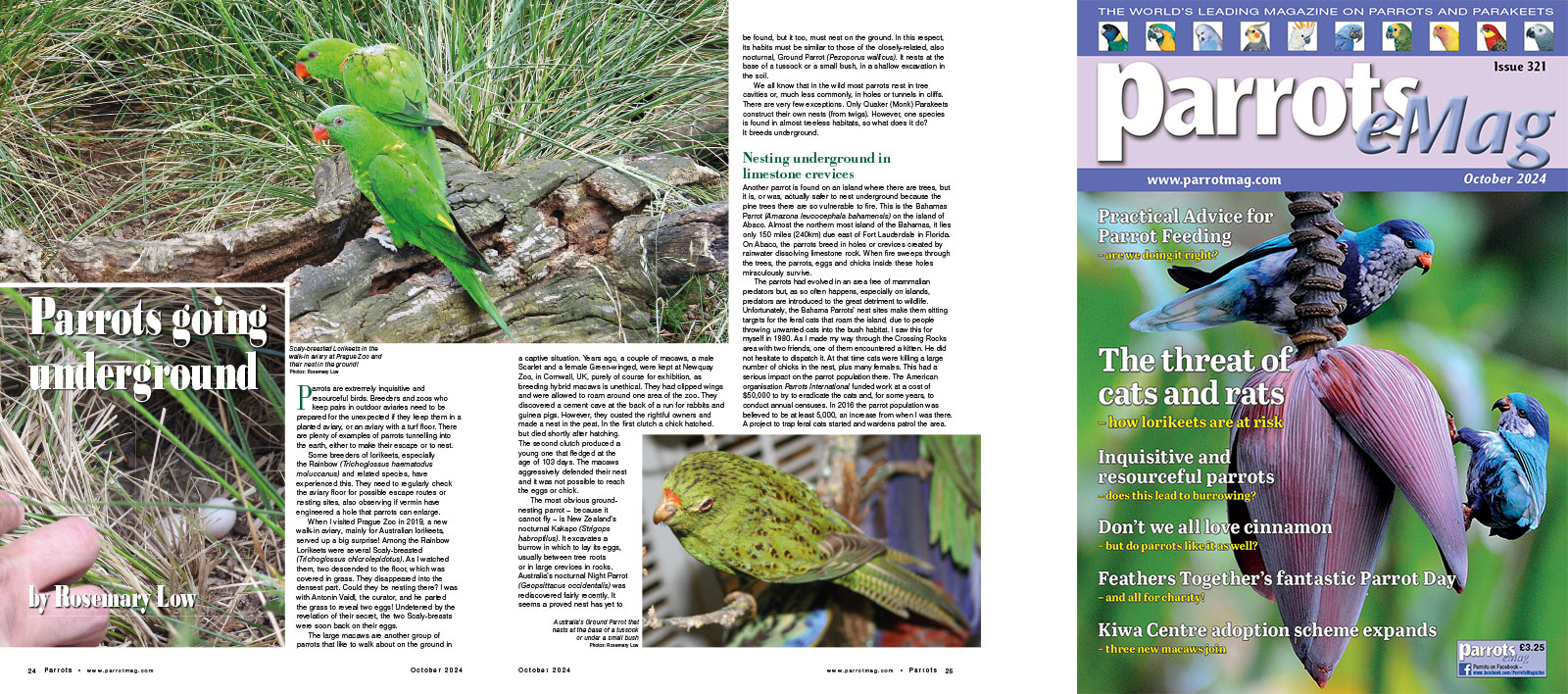
By Rosemary Low
Parrots are extremely inquisitive and resourceful birds. Breeders and zoos who keep pairs in outdoor aviaries need to be prepared for the unexpected if they keep them in a planted aviary, or an aviary with a turf floor. There are plenty of examples of parrots tunnelling into the earth, either to make their escape or to nest.
Some breeders of lorikeets, especially the Rainbow (Trichoglossus haematodus moluccanus) and related species, have experienced this. They need to regularly check the aviary floor for possible escape routes or nesting sites, also observing if vermin have engineered a hole that parrots can enlarge.
When I visited Prague Zoo in 2019, a new walk-in aviary, mainly for Australian lorikeets, served up a big surprise! Among the Rainbow Lorikeets were several Scaly-breasted (Trichoglossus chlorolepidotus). As I watched them, two descended to the floor, which was covered in grass. They disappeared into the densest part. Could they be nesting there? I was with Antonin Vaidl, the curator, and he parted the grass to reveal two eggs! Undeterred by the revelation of their secret, the two Scaly-breasts were soon back on their eggs.
